آخرین مطالب
آقای دکتر مسعود خرمی نژاد(Pediatric Eye Disease Investigator Group Studies and the Challenges Ahead)
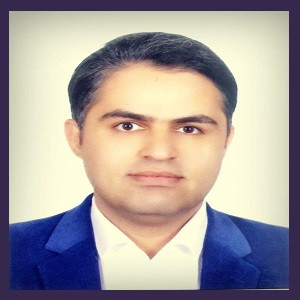
Pediatric Eye Disease Investigator Group Studies and the Challenges Ahead
Affiliation
Translational Ophthalmology Research Center, Farabi Eye Hospital, Tehran University of Medical Sciences.
Abstract
Amblyopia is one of the most common causes of preventable visual loss in children. A large body of research was performed in the treatment of different types of amblyopia. However, the most of previous study before the year 2000 were retrospective and nonrandomized researches.
The Pediatric Eye Disease Investigator Group (PEDIG), which was supported by National Eye Institute (NEI), has performed several well design prospective randomized clinical trials. According to results of these studies, refractive correction alone in different types of refractive amblyopia are a powerful treatment and adding occlusion therapy with spectacles was superior to refractive correction alone. In addition, initiating fewer hours of occlusion therapy was as effective as full time patching. Occlusion therapy was effective in older children, especially if their amblyopia had not previously been treated. Beside, weekend atropine as a pharmacological penalization was as effective as occlusion therapy.
Although the PEDIG studies are the greatest exist evidences in this field, there are some main limitations such as they did not provide any recommendation about amblyopia treatment in infants and uncooperative patients. In this presentation, the author will have discussed about these issues.

آقای دکتر محسن حیرانی(Optometric Management of Anisometropic Amblyopia)

Optometric Management of Anisometropic Amblyopia
Ph.D. in Optometry and Vision Sciences
As primary eye care practitioners, we are the first to diagnose and treat a variety of ocular conditions. The role we play becomes even more vital in our youngest patients. Amblyopia is a frequent cause of monocular vision loss in children. A difference in refractive error between the two eyes (anisometropia) is a common cause of amblyopia.
Although there have been reports that refractive correction alone results in improved vision in anisometropic amblyopia, it is generally held that the majority of cases will need additional treatment because refractive correction alone will not be sufficient to completely treat the amblyopia. In one study, approximately one-third of children ages three to under seven with anisometropic amblyopia resolved their amblyopia with spectacle correction alone, and over 75% of patients improved two or more lines of visual acuity with spectacle correction alone.
The next step in amblyopia treatment is penalization of the better-seeing eye. This can be achieved by a variety of methods, the most common being patching or atropine use to blur the sound eye. Patching for two hours per day is recommended for patients with moderate amblyopia (20/80 or better visual acuity), while patching for six hours is recommended for patients with severe amblyopia (20/100 or worse visual acuity).
Another treatment currently under investigation is the use of binocular therapy to treat amblyopia. One approach is to use dichoptic stimuli, in which the amblyopic eye views a high contrast image and the fellow eye views a lower contrast image. This therapy has been implemented using games on an iPad and by having patients view movies with this type of stimulus.
In summary, amblyopia can initially be managed in a primary care setting. Many patients will improve their visual acuity, some to the point of resolution, with correction only or with correction and optical penalization. Patients whose amblyopia does not resolve with correction and penalization, as well as patients with strabismus, can be referred to a specialist in binocular vision for further treatment. Proper diagnosis and management of amblyopia in a primary care setting is important to providing amblyopic patients the best care and the best possible visual outcomes.

آقای علیرضا ریاضی فر_انتخاب فریم و عدسی برای بیماران آنیزومترپ)

انتخاب فریم و عدسی برای بیماران آنیزومترپ
دانشجوی کارشناسی ارشد دانشگاه علوم پزشکی ایران
اختلاف 1 دیوپتری بین عیب انکساری دو چشم آنیزومتروپی نامیده میشود. اصلاح نشدن آنیزومتروپیا سبب ایجاد آمبلیوپیا، اختلال دید دوچشمی و کاهش حساسیت کانتراست دوچشمی میشود. از طرفی اصلاح شدن آنیزومتروپیا سبب ایجاد آنیزوکونیا و پریزم القا شده (آنیزوفوریا) در جهات مختلف نگاه میشود. بزرگنمایی عینکی تحت تاثیر دو عامل فاکتور قدرت و فاکتور شکل میاشد و برای برطرف کردن مشکل آنیزوکونیا باید پارامترهای این دو فاکتور را برای هر عدسی به نحوی تنظیم کنیم که اختلاف بین بزرگنمایی دو عدسی به حداقل برسد. تغییر پارامترهای دو فاکتور قدرت و شکل بسته به نوع آنیزومتروپی باید تغییر داده بشود؛ در انتخاب عدسی برای بیماران آنیزوهایپروپ، عدسی مثبت تر باید با انحنای پایه کمتر و ضخامت مرکزی کمتر در فاصله ورتکسی کمتر فیت بشود. در انتخاب عدسی برای بیماران آنیزومایوپ عدسی منفی تر باید در فاصله ورتکسی کمتر فیت بشود. همچنین انتخاب عدسی های آسفریک و عدسی های با پوشش آنتی رفلکس در همه تجویز ها توصیه میشود.
در اصلاح پریزم عمودی و پریزم القا شده (بخصوص برای بیماران پرزبایوپ) میتوان از پریزم های فرنل، طراحی Slab-Off (به عنوان یک آپشن رایج که در عدسی منفی تر یا مثبت کمتر اعمال میشود)، انتخاب دو نوع سگمنت نزدیک متفاوت برای دو عدسی و سگمنت جبرانی R استفاده کرد.
در انتخاب فریم نیز بهتر است فریم های با حدقه کوچک و گرد با پد بینی قابل تنظیم در فاصله ورتکسی کم با زاویه پانتوسکوپیک مناسب انتخاب بشود.

آقای علیرضا علینقی(تمرینات بینایی بیماران انیزومتروپیک آمبلیوپی در سنین مختلف در خانه)

تمرینات بینایی بیماران انیزومتروپیک آمبلیوپی در سنین مختلف در خانه
اپتومتریست و ارتوپتیست بیمارستان فوق تخصصی چشم پزشکی نور
درمان تنبلی چشم همواره برای همکاران موضوعی بسیار حیاتی و توام با چالش های بسیار بوده،بصورتی که در مورد تکنیک های درمانی وسن مناسب درمان نظرات و دیدگاههای مختلفی بوجود آمده.از این رو بیماران بزرگسال تر و خانواده های بیماران خردسال دچار یک سردرگمی و گاها عدم موفقیت در درمان میشوند.
از این رو داشتن یک پروتکل صحیح درمانی و انجام صحیح آن می تواند بسیاری از این مشکلات را مرتفع کند.از طرفی دیگر ،نبود روش هاو تکنیک های صحیح در مان فعال تنبلی چشم خصوصا در بیماران کم سن تر
باعث می شود آنها میل ورغبتی به درمانشان از خود نشان ندهند.
لذا درمانشان با شکست مواجه می شود،در این مقاله سعی شده تمرینات و تکنیک های کار آمددرمان آنیزومتروپیک آمبلیوپی که قابل دسترسی برای اغلب بیماران و قابل اجرا در منزل باشد ، با در نظر گرفتن شرایط سنی،اجتماعی و اقتصادی آنها معرفی شود.

آقای شکرالله شفائی(نقش under-correction, un-correction و over-correction به عنوان یک راهکار در کاهش پیشرفت مایوپی)
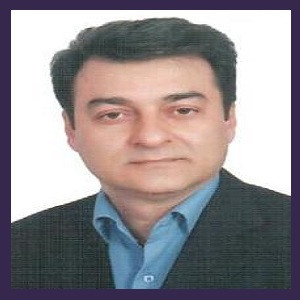
نقش under-correction, un-correction و over-correction به عنوان یک راهکار در کاهش پیشرفت مایوپی
presenter
Background and Aim: در این مطالعه سیستماتیک،ارتباط بین عدم اصلاح ، تصحیح کمتر و تصحیح بیش از حد در افراد مایوپ و پیشرفت مایوپی در کودکان و نوجوانان (تا 18 سال) مورد بررسی قرار گرفته است.
Methods: منابع جستجوشده شامل سه پایگاه داده (PubMed ، Web of Science) وCochrane Central Register of Controlled Trials [CENTRAL بوده است. با استفاده ازهشت مطالعه کوهورت آینده نگر و یک تجزیه و تحلیل گذشته نگر ازداده های کلینیکی، داده های عدم تصحیح و تصحیح کمتر میوپیا در مقابل تصحیح کامل میوپیا مورد مقایسه قرار گرفته است.
Results: براساس نتایج بدست، under-correction فاقد اثر مفید بوده و برخی مطالعات افزایش مایوپی نشان داده است.اگرچه یک مطالعه نشان از کاهش رشد مایوپی در کوهورت اصلاح نشده در مقایسه با اصلاح کامل دارد، مطالعه دیگر خلاف آن را نشان می¬دهد. در یک مطالعه که از آنیزومایوپ برای مقایسه اصلاح کمتر یک چشم با اصلاح کامل چشم دیگر استفاده شد، نشان داده شدکه اصلاح کمتر موجب کاهش رشد مایوپی در آن چشم شد. مطالعه دیگری در مورد تصحیح کامل فقط در یک چشم نشان داد که پیشرفت در چشم اصلاح نشده سریعتر است. تصحیح بیش از حد نزدیک بینی هیچ اثری نداشت
Conclusion: یافته های کلی با اصلاح کمتر مایوپی که موجب افزایش میزان مایوپی می شود، همخوانی ندارد. هیچ مدرک محکمی دال بر مفید بودن عدم اصلاح،مونوویژن یا اصلاح فول وجود ندارد. با این وجود، توصیه بالینی، تجویز فول مایوپی است. مطالعات بیشتری برای تعیین آن میزان مایوپی که میتواند بدون اثر بر رشد مایوپی و چگونگی تغییر با زمان، تصحیح نشده باقی بماند، لازم است.

خانم فروزان نارویی(INTERVENTIONS TO SLOW PROGRESSION OF MYOPIA)
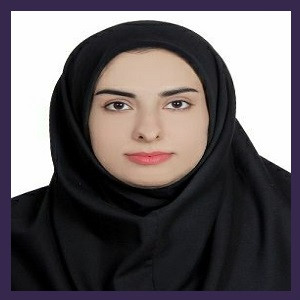
INTERVENTIONS TO SLOW PROGRESSION OF MYOPIA
BSc, MSc, PhD student in Optometry and vision sciences at Iran University of Medical Sciences (IUMS)
Abstract: Myopia is a significant public health problem and its prevalence may be increasing over time. The main treatment options of single vision spectacle lenses, contact lenses, and refractive surgery do not slow the accompanying eye growth or retard the physiological changes associated with excessive axial elongation. High myopia is a predisposing factor for retinal detachment, myopic retinopathy, and glaucoma, contributing to loss of vision and blindness. The high prevalence of myopia and its prominence as a public health problem emphasize the importance of finding effective treatments that slow myopia progression and axial elongation. Various treatment options such as undercorrection of myopia, gas permeable contact lenses, bifocal or multifocal spectacles, orthokeratology contact lenses, soft bifocal contact lenses, and topical pharmaceutical agents have all been introduced to control progression of myopia. In this presentation, the various methods to slow myopia progression will be described. Finally, the most effective methods will be introduced.

آقای محمدعلی نخعی(EFFECT OF MULTIFOCAL CONTACT LENSES TO CONTROL MYOPIA)
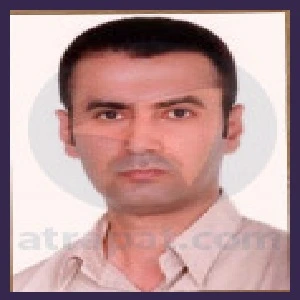
EFFECT OF MULTIFOCAL CONTACT LENSES TO CONTROL MYOPIA
Iran university of medical science
Abstract:
اثر کنتاکت لنزهای مالتی فوکال در کنترل مایوپی محمد علی نخعی کارشناس ارشد اپتومتری مشکل مایوپی بسیاری از مردم جهان را تحت تاثیر قرار داده است .چندین مکانیزم برای کنترل مایوپی در بچه ها وجود دارد که شامل : استفاده از آتروپین رقیق شده ، ارتوکراتولوژی ، عینکهای تدریجی و استفادف از کنتاکت لنزهای مالتی فوکال می باشد. در بررسی های انجام شده مشاهده شده است که میتوان با استفاده از لنزهای مالتی فوکال در بچه های مایوپ ، پیشرفت مایوپی را آهسته تر نمود. چندین مطالعه در پنچ سال گذشته نشان داده است که استفاده از لنزهای مالتی فوکال با طراحی Center distance میتواند همزمان موجب آهسته تر شدن رشد طول قدامی خلفی چشم و آهسته تر شدن پیشرفت مایوپی شود کلمات کلیدی : لنزهای مالتی فوکال ، مایوپی

خانم زهرا کمری راد(ویژین تراپی در درمان تنبلی چشم)
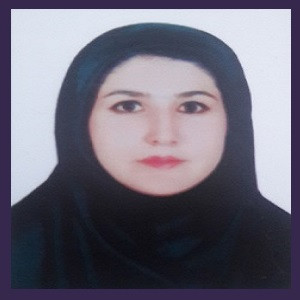
ویژین تراپی در درمان تنبلی چشم
optometrist
Abstract: به طور کلی رایج ترین روش درمان تنبلی چشم تصحیح عیوب انکساری وبستن مستقیم است این دو روش به صورت غیر فعال در درمان تنبلی چشم موثر هستند در حالیکه ویژن تراپی به صورت فعال باعث افزایش سرعت و شانس درمان می گردد برخی از اهداف ویژن تراپی شامل افزایش فیکساسیون مرکزی، تصحیح حرکات ساکاد و پرسوییت، افزایش دامنه و سهولت تطابق، شکستن ساپرشن وایجاد فیوژن حسی و حرکتی، افزایش حدت بینایی می باشد. درصورتیکه بیمار با تنبلی چشم به این درمان ها پاسخ مناسب نداد، می توان از روش های خاص دیگر استفاده کرد. مراحل درمان تنبلی چشم به صورت زیر است: 1.تصحیح کامل عیوب انکساری 2.بستن چشم 3.تمرین هماهنگی دست و چشم 4.تمرین رزولوشن بینایی 5.تمرینات فعال بینایی جهت تثبیت فیکساسیون مرکزی 6.درمان فیکساسیون غیرمرکزی 7.تمرینات فعال تطابقی 8.تثبیت دید دوچشمی نرمال 9.تعیین و تجویز روش های مناسب جهت حفظ درمان 10.تعیین ویزیت های دوره ای در مطب برای کنترل برگشت پذیری تنبلی چشم تصحیح عیوب انکساری بیمار معمولا با بستن چشم همراه می شود؛ قدیمی ترین وشناخته شده ترین درمان برای تنبلی چشم بستن مستقیم بدون عبور نور و به صورت کامل در چشم سالم است. از دیگر روش های ویژن تراپی می توان به تمرین فیکساسیون تک چشمی، تکنیک های foveal tag ، روش های Pleoptic وتمرینات دید دوچشمی اشاره نمود.

آقای محمدحسین شریف(Oral fluoxetine in the management of amblyopic patients aged between 10 and 40 years old)
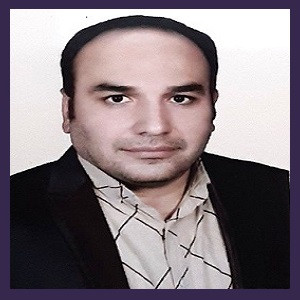
Oral fluoxetine in the management of amblyopic patients aged between 10 and 40 years old
Background and Aim: The objective of this study is to assess the efficacy of oral fluoxetine therapy in improving the visual function of amblyopic patients aged between 10 and 40 years old.
Methods: In this double-blinded, randomized, controlled trial (IRCT2016052428046N1; registered retrospectively), 40 eligible participants with anisometropic or mixed amblyopia were randomly assigned to either fluoxetine or placebo groups. Participants with anisometropia and logMAR best spectacle-corrected visual acuity (BSCVA) worse than 0.2 logMAR in the amblyopic eye or at least a two-line of difference in the BSCVA between the fellow eyes were included. Participants with significant ocular or systemic diseases were excluded. In both groups, the better eye of each patient was patched for 4 – 6 h a day during the study period. Participants in the treatment group were treated with oral fluoxetine for 3 months. Change in the Snellen BSCVA (after 3 months) was regarded as the primary outcome measure.
Results: Data from 20 participants in the fluoxetine group and 15 participants from the placebo group were analyzed (aged 11 – 37 years). The magnitude of improvement in visual acuity (from baseline to 3 months after treatment) was significantly higher in the fluoxetine group (0.240 ± 0.068 logMAR; 2.4 line-gain) compared with the control group (0.120 ± 0.086 logMAR; 1.2 line-gain).
Conclusion: This study suggests beneficial effects of fluoxetine in the management of adult and adolescent amblyopia.
Mohammad Hossein Sharif1 , Mohammad Reza Talebnejad2 *, Karim Rastegar3 , Mohammad Reza Khalili2 , M. Hossein Nowroozzadeh2
- Department of Neuroscience, School of Science and Advanced Technologies in Medicine, Hamadan University of Medical Sciences, Hamadan, Iran
- Poostchi Ophthalmology Research Center, Department of Ophthalmology, Shiraz University of Medical Sciences, Shiraz, Iran
- Department of Physiology, Shiraz University of Medical Sciences, Shiraz, Iran

خانم لیلا میرزایی صبا(تاثیر یادگیری ادراکی در آمبلیوپی)
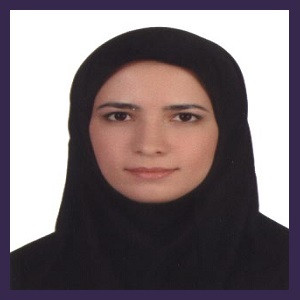
تاثیر یادگیری ادراکی در آمبلیوپی
Abstract: آمبلیوپی یک ابنرمالی developmental است که ناشی از تغییرات فیزیولوژیکال در کورتکس بینایی و نقص در form vision می¬باشد. متعاقبا ابنرمالی دید دو چشمی در طی دوران sensitive در سال¬های اول زندگی تجربه میشود. در حالی آمبلیوپیا اغلب بهبود می¬باید که در سال¬های اول زندگی درمان شود. درمان مرسوم آمبلیوپی شامل: تصحیح هر گونه عیوب انکساری، برطرف کردن هرگونه کدورت مدیا، فیکس کردن با چشم آمبلیوپ که عمدتا با اکلوژن همراه است. در کلینیک عمدتا درمان آمبلیوپی برای کودکان و نوزادان انجام می¬شود. در حالی که در بچه های بزرگتز از 8 سال و بزرگسالان درمان اغلب انجام نمی¬شود. مطالعات اخیر نشان دادند که یادگیری ادراکی پتانسیل درمان آمبلیوپی را دارند، اگرچه زمان بحرانی برای پیشرفت طبیعی عملکرد بینایی خاتمه یافته است، اما مطالعات نشان دادند که پلاسیسیتی قابل توجهی در سیستم بینایی بزرگسالان وجود دارد. یادگیری ادراکی برای بهبود عملکرد وسیعی از وظایف عملکردی که به وسیله تمرین به¬دست می¬اید، می¬باشد. یادگیری ادراکی منجر به بهبود بسیاری از وظایف بینایی در بزرگسالان از قبیل visual detection, vernier acuity , motion و حساسیت کنتراست می¬شود. یادگیری ادراکی در واقع می¬تواند عملکرد بینایی را در آمبلیوپی تغییر دهد.

آقای سید صابر صحیح النسب (بررسی اثرات نور آبی بر روی چشم)
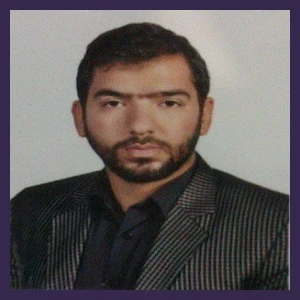
بررسی اثرات نور آبی بر روی چشم
کارشناس ارشد اپتومتری از دانشگاه علوم پزشکی ایران
Abstract:
در سال های اخیر، مردم به طور فزاینده ای به آلودگی های نور بر روی چشم خود توجه می کنند. در طیف نوری قابل مشاهده، نور آبی با طول موج 415 تا 455 نانومتر نزدیک به دامنه نورآسیب زننده به چشم است. این نور آبی( با انرژی بالا ) از قرنیه و لنزعبور می کنند و با رسیدن به شبکیه باعث بیماری هایی مانند خشکی چشم ، آب مروارید، دژنراسیون ماکولا مرتبط با سن، حتی تحریک مغز، مهار ترشح ملاتونین و افزایش تولید هورمون های آدرنوکورتیک می شود که به طور مستقیم بر کیفیت خواب تاثیر می گذارد. بنابراين، اثر نور آبی بر روی چشم، نگرانی مهمی برای آينده است. ما در این مقاله مروری، اثرات نور آبی را بر روی بافت های چشم توصیف می کنیم و تحقیقات مربوط به آسیب های چشم و پیشگیری فیزیکی و درمان های پزشکی اثر این نور را بررسی می کنیم.

خانم فرزانه دهقانیان(شیوع تنبلی چشم در بیماران سندرم داون با رنج سنی 10 تا 30 سال)
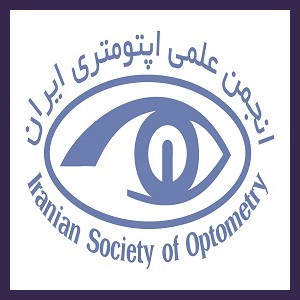
شیوع تنبلی چشم در بیماران سندرم داون با رنج سنی 10 تا 30 سال
MS student of optometry Iran University of Medical Sciences
Background and Aim:تعیین شیوع تنبلی چشم و عوامل موثر در ایجاد آن در بیماران با سندرم داون با رنج سنی 10 تا 30 سال است.
Methods: در این مطالعه 250 نفر از بیماران با سندرم داون در بیمارستان چشم پزشکی نور تحت معاینات کامل چشمی قرار گرفتند. در این گزارش شیوع آمبلیوپیا و ارتباط آن با عیب انکساری، انحرافات چشمی، کدورت عدسی، موقعیت پلک ها(توزیس) مورد بررسی قرار گرفت
Results: متوسط سنی نمونه ها 16.05± 4.82 سال بود که 53.0% آنان را مردان تشکیل داد. شیوع آمبلیوپیا توتال (اختلاف حدت بینایی 2 خط چارت یا بیشتر بین دو چشم) 11%( 95% CI: 9.65 to 12.35) و در چشم راست و چپ به ترتیب 34.3%و 33.1% بود. که شیوع آمبلیوپی توتال در مردان و زنان به ترتیب 5.10%و %16.70 بود( p= 0.001 شیوع هایپروپی برابر و بالاتر از 3 دیوپتر چشم راست در مواردیکه آمبلیوپی توتال داشته اند 19.6% (P= 0.000)که این مقدار در چشم چپ برابر(P= 0.000) 21.1% بود شیوع مایوپی برابر و بالاتر از 5 دیویتر چشم راست در مواردی که آمبلیوپی توتال داشته اند برابر 31.6% (P= 0.000) بدست آمد که این مقدار در چشم چپ برابر 33.3% (P= 0.000) بود. شیوع آستیگمات برابر یا بالاتر از 3 دیوپتر چشم راست درمواردی که آمبلیوپی توتال داشته اند برابر 13.7% ( P= 0.346) بود که این مقدار در چشم چپ برابر 20.0%) ( P= 0.001)بدست آمد .
Conclusion: این مطالعه نشان میدهد که درصد شیوع آمبلیوپیا در بیماران سندرم داون به نسبت افراد نرمال بیشتر است. فاکتورهای خطر آمبلیوپیا در این دسته از بیماران شامل هایپروپی بالا، استرابیسم به ویژه (ایزوتروپیا) و کدورت مدیا چشم (کاتاراکت) می باشد
